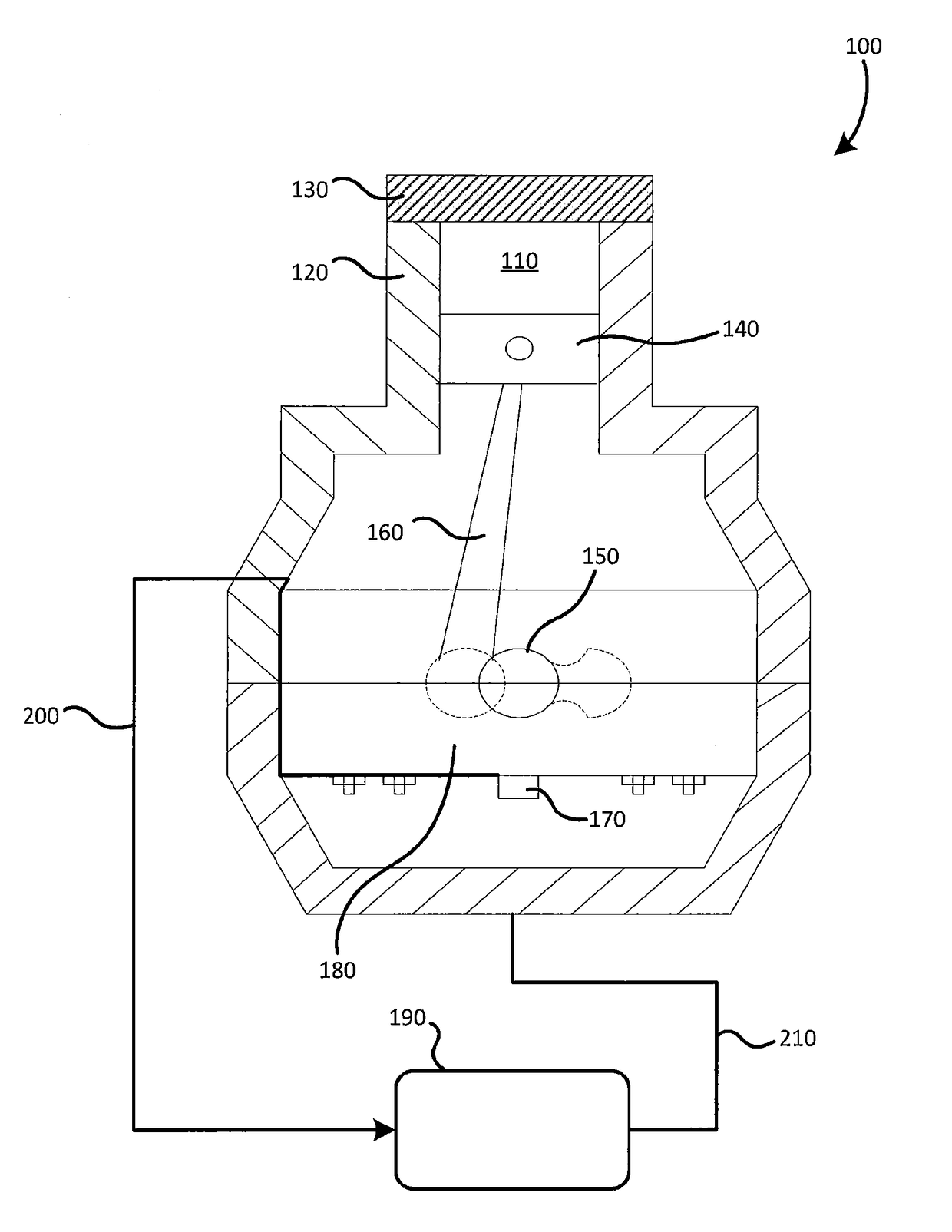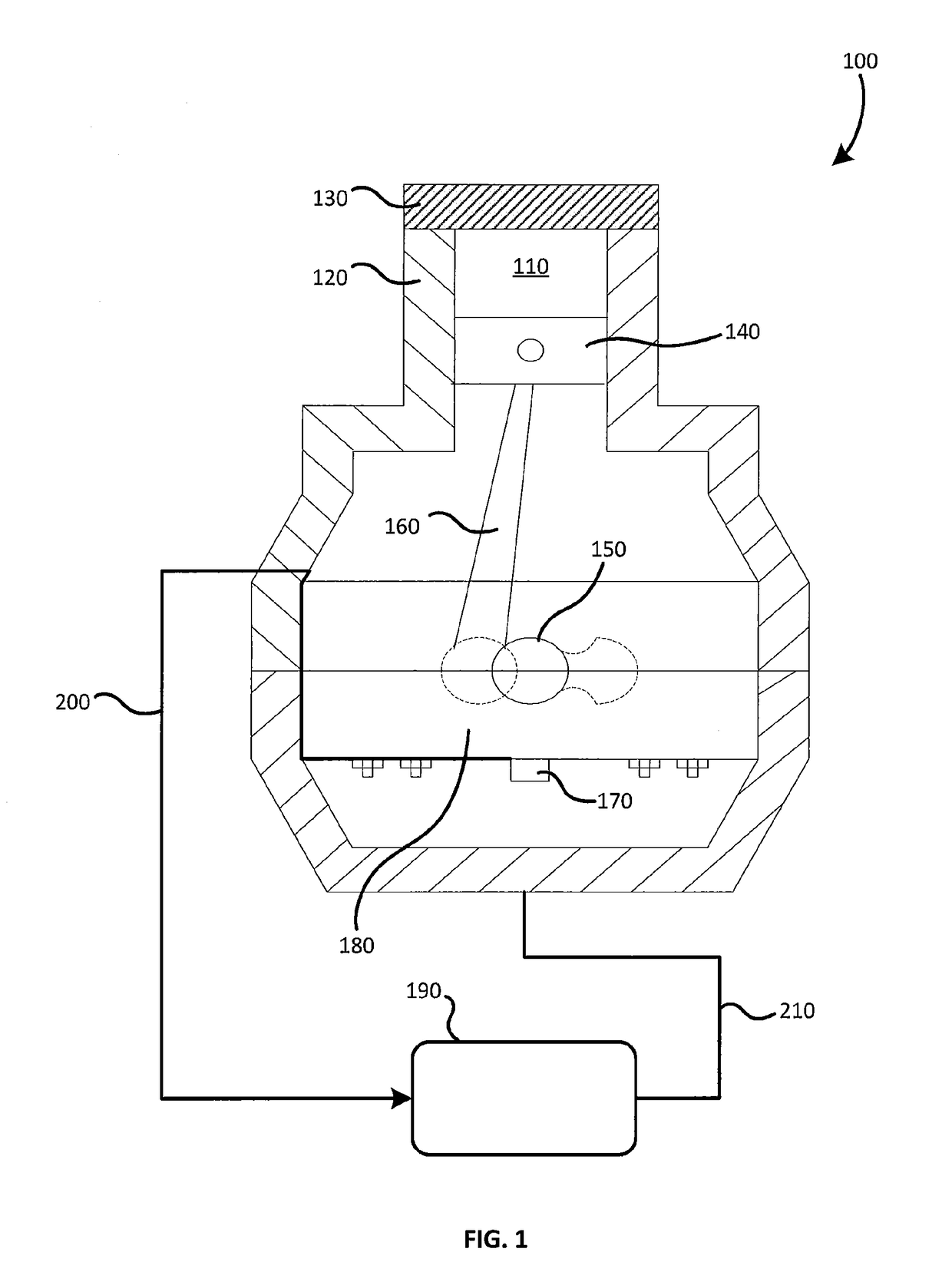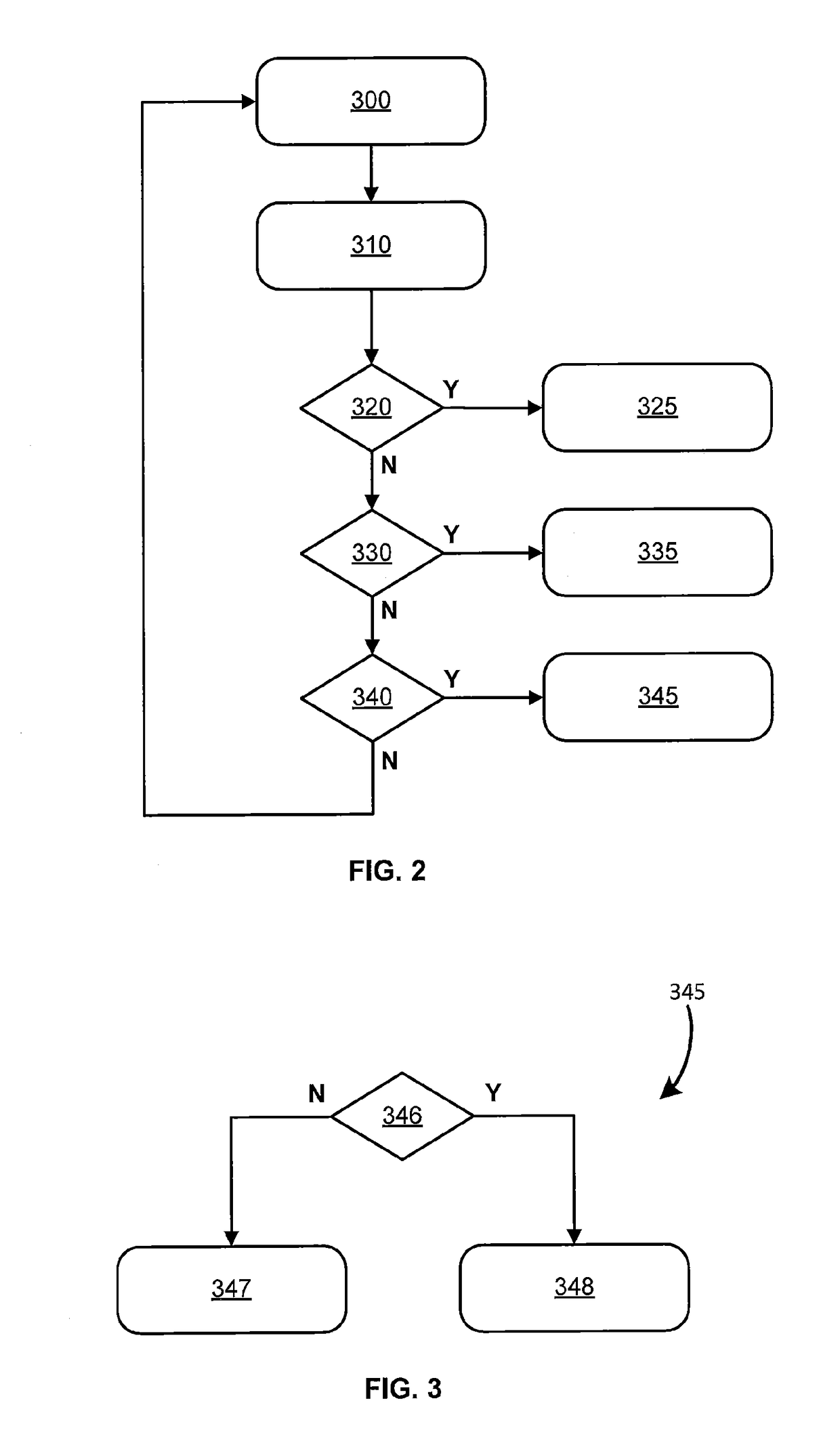Detecting and mitigating abnormal combustion characteristics
- Summary
- Abstract
- Description
- Claims
- Application Information
AI Technical Summary
Benefits of technology
Problems solved by technology
Method used
Image
Examples
Embodiment Construction
)
[0025]Referring to FIG. 1, there is shown by way of example internal combustion engine 100 that includes a control system employed to detect abnormal combustion characteristics and to perform mitigation techniques related to the detected combustion characteristic. In an exemplary embodiment engine 100 is a dual fuel engine that is fuelled with a pilot fuel and a gaseous fuel in a dual fuel mode and the pilot fuel in a single fuel mode. Engine 100 comprises combustion chamber 110, which in this example is defined by a cylinder bore in engine block 120, cylinder head 130 and piston 140. Only one such combustion chamber is shown in FIG. 1 although as would be known by those skilled in the technology engine 100 normally comprises two or more combustion chambers, and the technique disclosed herein applies to any engine having one or more combustion chambers. Piston 140 is reciprocable within the cylinder bore, and the reciprocating motion of piston 140 is translated into rotation of cra...
PUM
 Login to view more
Login to view more Abstract
Description
Claims
Application Information
 Login to view more
Login to view more - R&D Engineer
- R&D Manager
- IP Professional
- Industry Leading Data Capabilities
- Powerful AI technology
- Patent DNA Extraction
Browse by: Latest US Patents, China's latest patents, Technical Efficacy Thesaurus, Application Domain, Technology Topic.
© 2024 PatSnap. All rights reserved.Legal|Privacy policy|Modern Slavery Act Transparency Statement|Sitemap



